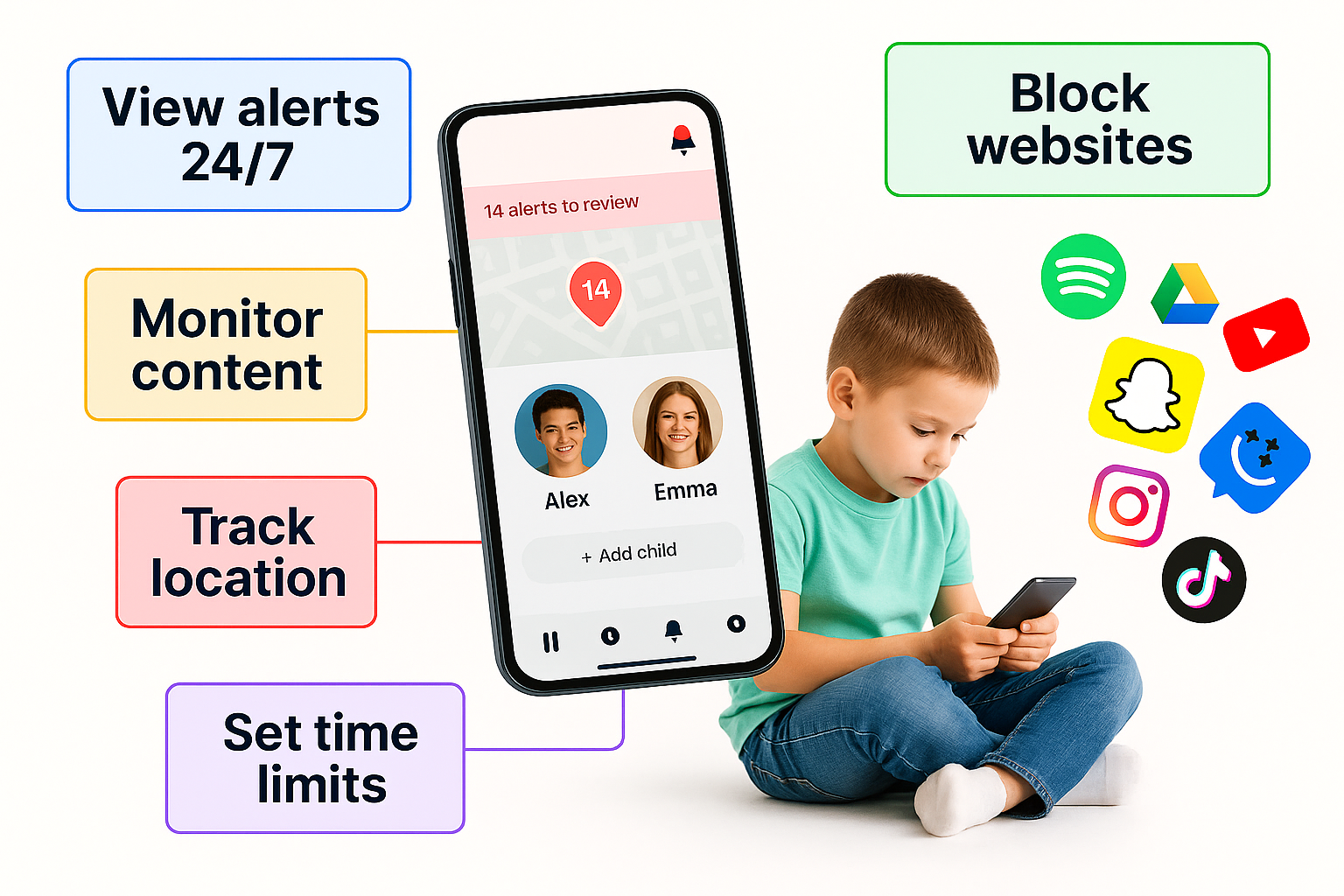📱 The Hidden Reality Behind Kids and Smartphones
A Mom’s Moment at the Mall
Picture this: A parent waits in the car after school, hoping to hear stories of actual face-to-face hangouts. When the kids pile in, each one immediately reaches for their phone—silent, heads down. That moment jolts you: When did connectivity become silence?
This isn’t just one parent’s experience. In parenting circles today, that scene is repeated. Smartphones aren’t just tools — they're pulling families apart.
From Ubiquity to Worry: Teen Screen Use Today
Smartphones and social media dominate teenage life. According to surveys:
- Over 95% of adolescents ages 13 to 17 say they use a social media platform. Boston Magazine
- Many teens access apps daily — for some, nearly constantly.
- Two-thirds of teens report using these platforms at least daily. Boston Magazine
The pressure to stay connected, post, and respond is relentless. For parents who don’t want a smartphone but also don’t want their child socially cut off, it’s a difficult balance.
The Risks Behind the Screens
Mental Health & Self-Perception
Research links heavy social media use to anxiety, depression, and lower self-esteem. In one cited study, teens who posted often were nearly twice as likely to report depression and anxiety symptoms compared to those who seldom posted. Boston Magazine
Online comparisons, image ideals, and algorithmic feedback loops can intensify insecurities, especially for young adolescents whose identities are still forming.
Sleep Disruption
Many children keep their devices close at night or even sleep with them. That convenience comes at a cost: less quality sleep, frequent awakenings, and poor rest overall. Boston Magazine
Sleep loss cascades into daytime fatigue, mood swings, and trouble focusing.
Academic Disruption
One study cited from the article tracked about 1,459 middle schoolers. It found that increased use of social media platforms correlated with drops in academic performance. Boston Magazine
Switching between homework and apps disrupts focus and weakens retention.
Algorithms and Addiction
Smartphone apps are often engineered to keep users returning. Think of them as mini slot machines — likes, notifications, and content loops keep teens hooked. Boston Magazine
When combined with adolescent brain development (heightened social sensitivity, impulse control still maturing), the risk of compulsive usage spikes.
What Schools Are Doing & Why It Matters
Some schools are locking down phone access — using pouches, requiring phones be off or out of reach during class, or instituting lockboxes. Boston Magazine
The goal: reduce distractions, promote engagement, and teach digital respect. But rules alone won’t solve deeper issues of habit, autonomy, and self-regulation.
What Real Parents Are Saying
Parents voiced fears about:
- Exposure to sexual content or recruitment online
- Peer pressure and mental health effects
- Identity influence from influencers or extremist content
One mother described youth behavior as “algorithm addiction machines in their hands.” Boston Magazine
She tried installing time limits, confiscating phones for a day, and auditing chat logs — all with limited success. What finally helped was treating phones not as enemies, but as teaching tools.
Turning the Phone from a Trap Back Into a Tool
Here’s how families are shifting their approach:
- Model behavior: Parents put phones away during dinner or conversations.
- Mentor + monitor: Ask kids what they're seeing, share screen experiences, know their login info.
- Mastery, not forbiddance: Let kids explore critical thinking about social media instead of outright banning.
- Make memories outside the screen: Encourage times where technology is off, and connection is real.
One experiment: a parent placed their child’s phone in the front seat on a ride, and rather than scrolling, they talked — about shoe design, class, life. The phone became a bridge, not a barrier.
Parenting in the digital age is never simple, but families don’t have to face it without tools. More parents are looking for the best first phone for kids without internet—devices designed to protect rather than overwhelm. Choosing a child-friendly phone with parental controls gives kids the independence they crave while reducing the risks that come with apps and social platforms. For families of younger children, even a limited feature phone for young children or a safe starter phone for tweens can provide peace of mind. The key is balance: letting kids stay connected, while parents stay confident they are protected.

